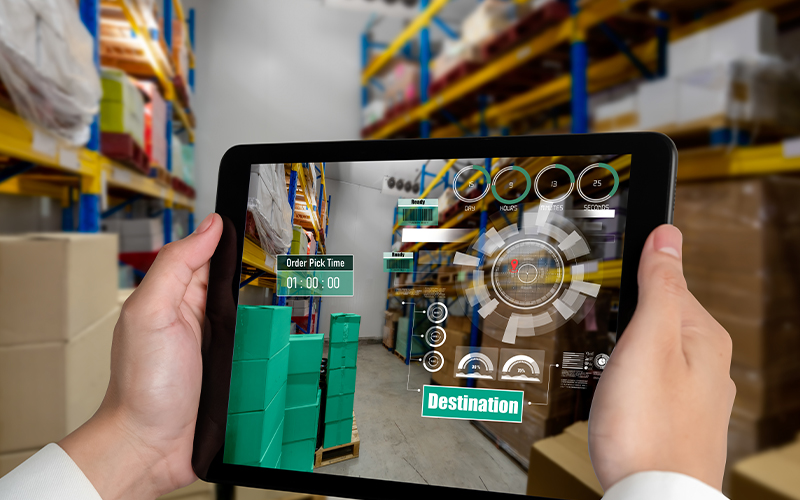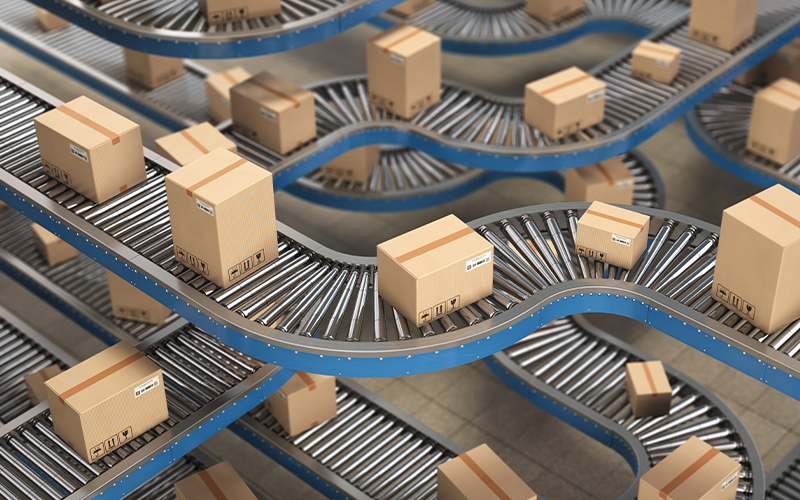Customers’ expectations from the products they purchase from the Consumer Packaged Goods (CPG) industry have soared over the years. Apart from the increased focus on the environment and sustainability goals, consumers are also keen to understand product sourcing to ensure that the products they purchase have ethical and socially responsible roots. Even while buying food products, consumers are showing increasing levels of interest in understanding the nutritional aspects, and how the foods are being produced, processed, and distributed.
For CPG companies to effectively meet rising expectations from consumers, embracing technology is no longer an option, but an absolute imperative.
What are some of the technologies that are making a mark and helping the CPG industry transform itself digitally? Let us explore them.
Internet of Things
The Internet of Things (IoT) has the capability to unlock hypergrowth for the CPG industry. It is no secret that success in the CPG industry depends on consistently delivering top-quality products on time. When products are out-of-stock at retail stores, it is not only a missed sales opportunity for companies but also a negative impact on brand reputation. IoT devices have sensors that can provide real-time insights into the supply chain, thus allowing companies to track products from manufacturing to distribution. IoT sensors can even monitor temperature, humidity, and other environmental factors to ensure that product quality is at an optimum during transportation and storage. This kind of visibility enables better inventory management, eliminates stockouts, optimises retailer relationships and improves overall supply chain efficiency.
Machine Learning and Artificial Intelligence
One of the primary areas in the sector that stands to benefit from Artificial Intelligence (AI) algorithms is demand forecasting. These algorithms can analyse past sales data, and market trends, and estimate future sales of CPG products with great accuracy. AI’s potential in this area is especially noteworthy since it can even help with the improvement in product development and personalisation of products created for consumers based on specific requirements. One of the most common examples of AI personalisation is when e-commerce websites display the “Customers also bought” section to encourage customers to add more items to their cart and make purchases.
Data Analytics
The volume of data that organisations have at their fingertips is phenomenal! The available consumer behaviour data can be analysed to unearth specific trends in consumer buying patterns. For companies, this is akin to striking gold as they can utilise this data to make better and more informed decisions in marketing initiatives, distribution options and trade promotions. Data can also be analysed for predictive analytics to forecast future demand and optimise inventory management.
For example, if a CPG company analyses its historical data and sees an increased demand for some of its products in the summer season, it can optimise its production schedules. It can plan an increase in its raw material procurement and ensure the distribution of its products with high efficiency. This reduces waste, optimises production and guarantees that the required products are available when customers ask for them.
Automation
Technologies such as RPA (Robotic Process Automation) are being increasingly used in the CPG space to automate tasks that are repetitive in nature. Automating repetitive tasks enables better quality control (due to a reduction in errors) apart from a reduction in labour costs. Waste production is also reduced drastically, resulting in the happy offshoot of increased savings. Apart from this, automation gives an impetus to innovative packaging solutions since automated packaging systems can handle diverse packaging sizes thus increasing flexibility and adaptability to changing market demands. Overall, automation in the CPG industry paves the way for a significant increase in efficiency and productivity.
Augmented Reality/Virtual Reality (AR/VR)
In recent years, the CPG industry has chosen to completely reimagine itself with technologies such as Augmented Reality/Virtual Reality (AR/VR). The adoption of AR/VR technology helps with increased customer engagement by delivering hyper-personalised customer experiences. Digital catalogues and product visualisation are made possible through the use of this technology. A case in point is one of the leading footwear companies which allows potential customers to virtually try on shoes with the help of their AR app. Customers can view how certain selected shoes would look on their feet by pointing their smartphones towards their feet!
Future of CPG and CPG technologies
Despite the universal momentum towards digital transformation, it is a known fact that, compared to other industries, the CPG industry needs to catch up in the adoption of CPG-specific digital technologies. With the tremendous benefits that Consumer-Packaged Goods technology offers, it is time the CPG industry embraced it and used it to improve its efficiencies to deliver products of higher quality with the bonus of improved profitability.
IBPM brings to you cutting-edge practices, solutions and frameworks to transform practices inTrade Promotion Services. Our state-of-the-art solutions have helped our CPG clients achieve ideal Trade Promotion Management operating models. We leverage advanced analytics and machine learning to identify trade promotion optimisation opportunities, reduce disputes and improve payments on time.







